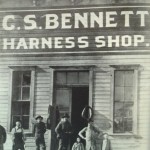 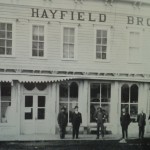 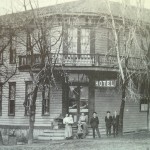 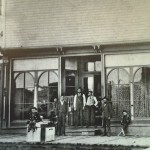 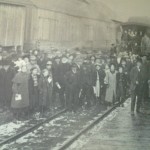 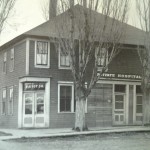 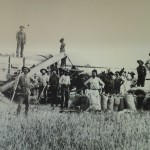 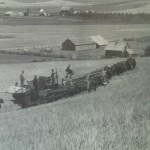 |
Like most towns in Whitman County, Farmington was once a prosperous and rapidly expanding community during the early twentieth century. An abundance of nearby timber and a close water source was what first attracted settlers to the area in the 1870s. George Briggs and Hiram Youngs were the first to homestead the area, but it was Minnesota native George Truax who in 1878 gave his homestead over to be platted into a town. Named after Truax’s hometown of Farmington, Minnesota, the town in Washington was officially incorporated in 1888. In the beginning, cattle-ranching was the main focus of Farmington’s economy, which was the norm for most young, emerging frontier towns. In the early 1890s however, settlers began to plant sugar beets to supplement their livestock-based economy. This quickly progressed into the planting of fruit orchards and by the late 1890s ranching was all but abandoned. The fruit orchards had proved to be an unsuccessful venture due to early frosts and cold winters, which left residents looking for a dependable, long-term agro-economic foundation.Like nearly all Palouse-area towns in the early 1900s, Farmington residents looked to dry-farming techniques to harvest grain in the region’s fertile loess soil, but unlike most Palouse towns, Farmington also maintained an economic base in legume harvesting as well. Wheat and lentils both became staple crops, the success of which was made possible by the construction of the Spokane-Palouse Rail Line.
The community of Farmington soon began to thrive as a result of both their new form of agriculture and the railroad depot. The depot not only helped farmers ship their crops, but it also helped to expand the town’s rather small population. The depot also helped to bring exciting visitors to the little town. In 1908, Teddy Roosevelt arrived at the depot on a cross-country tour where he stopped by many little towns on his way to speak in the larger urban areas such as Spokane and Seattle.
Farmington has been a town of boom and bust. The agricultural economy and the construction of the railroad depot brought the “boom”, but the Great Depression of the 1930s brought the “bust”. Farmington was not alone as many communities (almost all of them) suffered tremendously in the aftermath of the stock market crash of 1929. Right before the crash, the population of Farmington was nearly 500 residents, and looked to be on a steady increase, but by 1940 the population was down to 341. In 1970 the population was 140 and has maintained around the same number ever since. In 2010 the population of Farmington was 146.
Lambeth, Robert M. “Farmington,WA | Spokane Historical.” Spokane Historical. N.p., n.d. Web. 23 May 2014. <http://spokanehistorical.org/items/show/380>.
